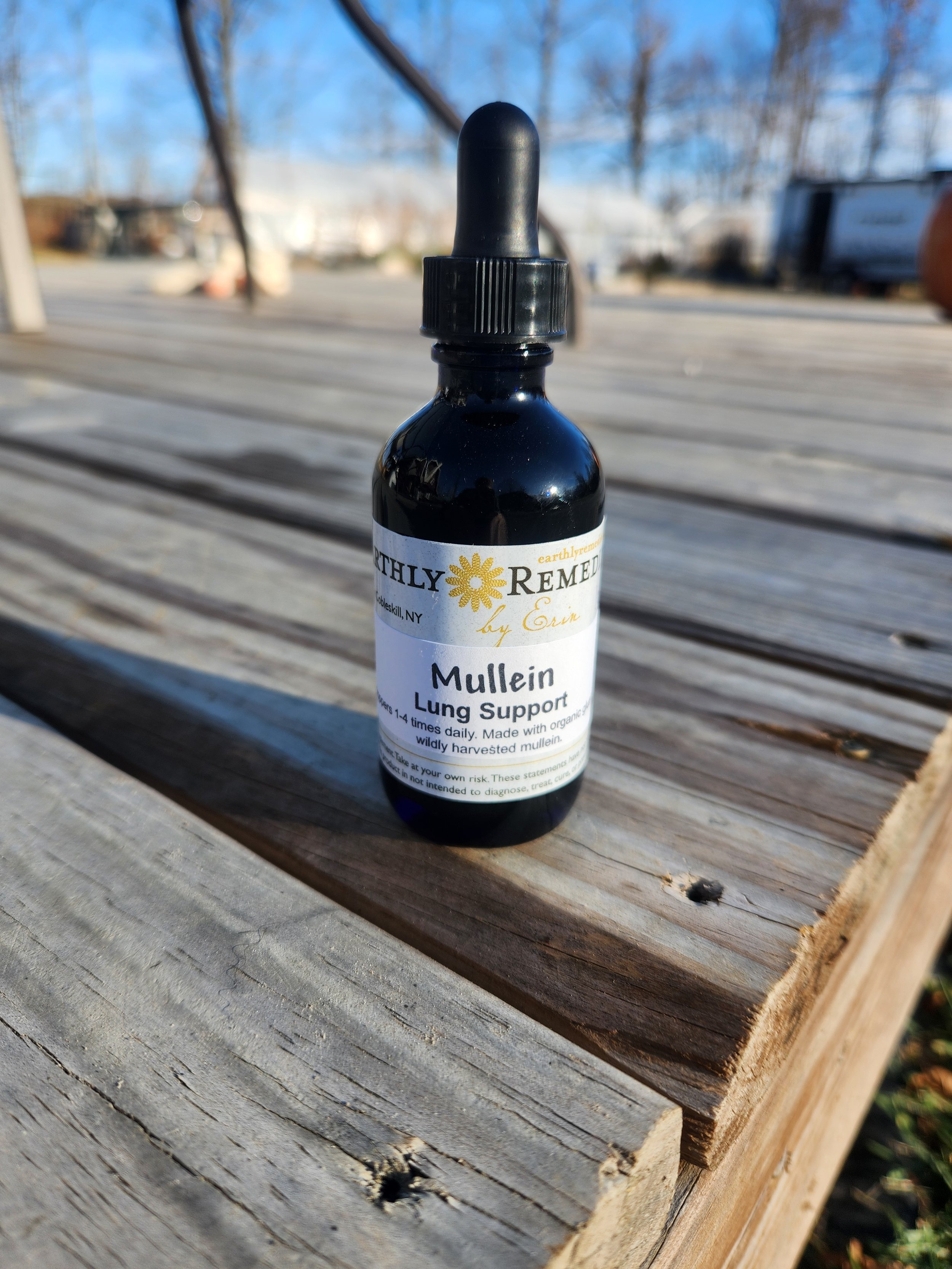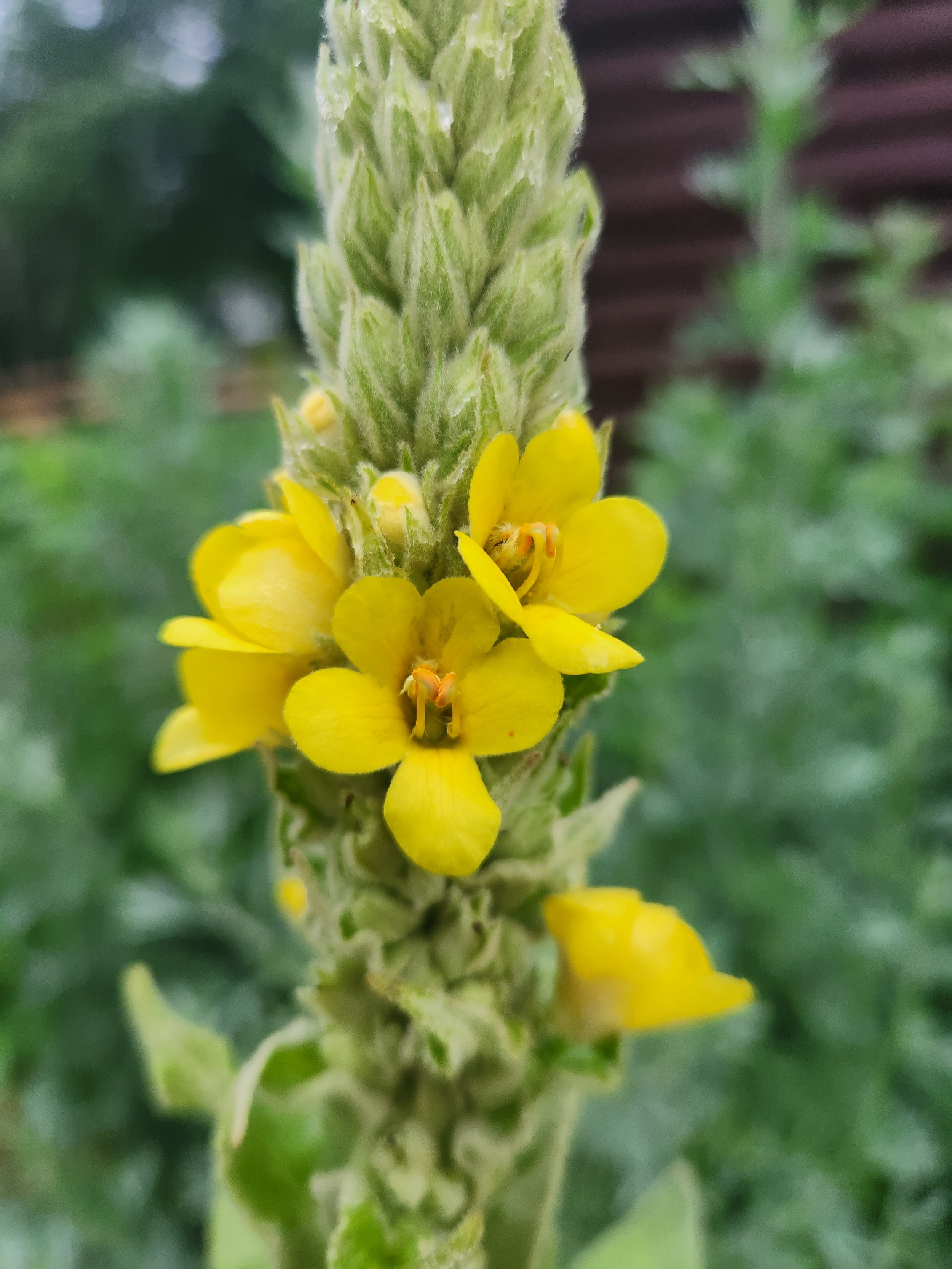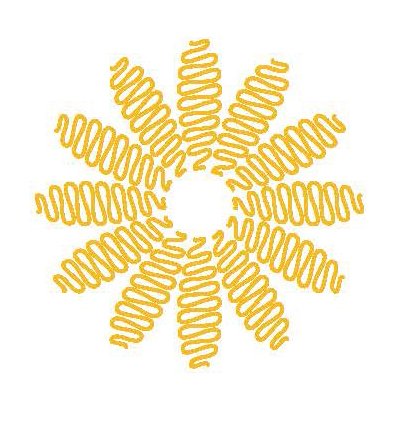Mullein Lung Support Tincture


Mullein Lung Support Tincture
Made with our own fresh mullein leaf. Great lung support. Can be used to support folks with COPD, asthma, chest colds and coughs. This is my go to along with goldenrod at the first sign of a cold starting.
2oz bottle
Mullein (Verbascum Thapsus) grows in dry soils like sand and gravel. It loves the sides of the road, but I would be cautious harvesting anything from the side of the road. I have some beautiful first year plants currently growing in some mulch next to my strawberries so what I noticed is while it grows in not so favorable conditions, I think it thrives when given better places to grow. The root, leaf, and flower all get used in making plant medicine. The Greeks would use the stalks as torches by dipping them in oil and setting fire to them. They would roll and dry the leaves and use them as wicks in oil lamps. You may have heard some people mentioning using the leaf as toilet paper because it is so soft. I wouldn’t do it as the little hairs on the leaves can be quite irritating to the skin in your nether regions.
Mullein has big hairy leaves that are blue, green, grayish in color and they can be up to 12 inches big. They are biannual and don’t flower the first year. First year plants only have the leaves arranged in a spiral close to the ground. The second year the plant sends up a flower shoot that can be 6-8 feet tall. It has small little yellow flowers on it that have 5 petals.
I remember a long time ago watching a video with Jim McDonald and Matthew Wood on using the roots and the stalk of mullein for things like back pain because of its lubricating effects. The stalk is usually perfectly straight, but I have seen it grow out from underneath rocks and porches, it bends itself but once it reaches the light and doesn’t have obstacles in its path it grows perfectly straight. I have had conversations with a teacher of mine about how the straight stalk essentially symbolizes your spine.
The primary use of mullein is for more of a dry cough that has spasms where the bronchial are irritated. For someone who has a hard painful cough it acts as a relaxant expectorant and in turn is an anti-spasmodic. It helps to open the airway and sooth the dry cough. Its demulcent properties help to increase mucus to soothe and moisten the mucus membranes.
The leaves are primarily used for respiratory support as it can treat inflammatory conditions in the organs of the respiratory and urinary systems. It is good for someone who is having trouble sleeping due to a spasmodic cough. I like to use it fresh and dried. If you are going to make tea with it, one should use a mesh filter or cheesecloth to filter out the tiny hairs as they can sometimes be irritating to the throat. I like to blend mullein and elecampane root together for coughs. It is a nice blend if you get a tickle in your throat also. I use mullein for helping with asthma and COPD because of the anti-spasmodic effects. American Indians would use the herb as a smoking herb mainly to help clear and calm the lungs. I do know some herbalists that make smoke blends that include mullein. I don’t share that belief because I feel that the smoking negates any of the benefit unless it is used to make someone more comfortable during end-of-life care.
The flowers of mullein are considered anodyne which means they have pain relieving properties. The flowers primarily get used in an oil to make earache oil for babies. I like to do a blend of garlic oil, St. John’s wort oil, calendula oil, and mullein flower oil to make earache oil for babies - it is pain relieving, antibacterial and antimicrobial. You can find our earache oil on the website here.
The leaf can also be used to help tone the urinary tract. Sajah Popham talks about the possible benefit on the bladder nerve and using it for incontinence.
This is a dietary supplement.
I recommend that with all the herbal tinctures you start of small in dosing and work your way up to recommended dosage. Some people only need a small amount to notice a difference.
Disclaimer: Earthly Remedies is not responsible for any individual’s use of our products. Each person’s response to herbs may differ. Consult a qualified health care practitioner or herbalist for guidance.
*These statements have not been evaluated by the Food and Drug Administration. These products are not intended to diagnose, treat, cure or prevent any disease.

